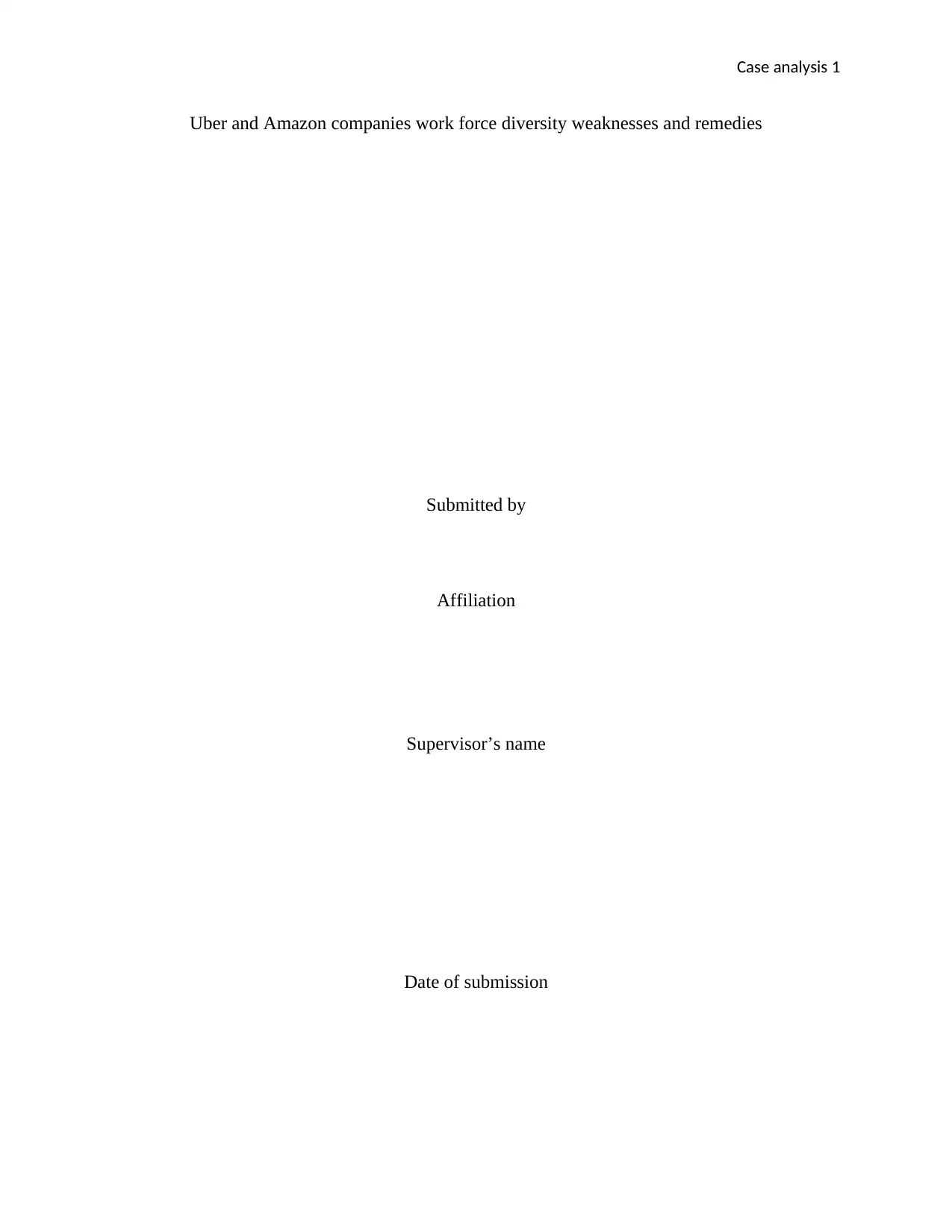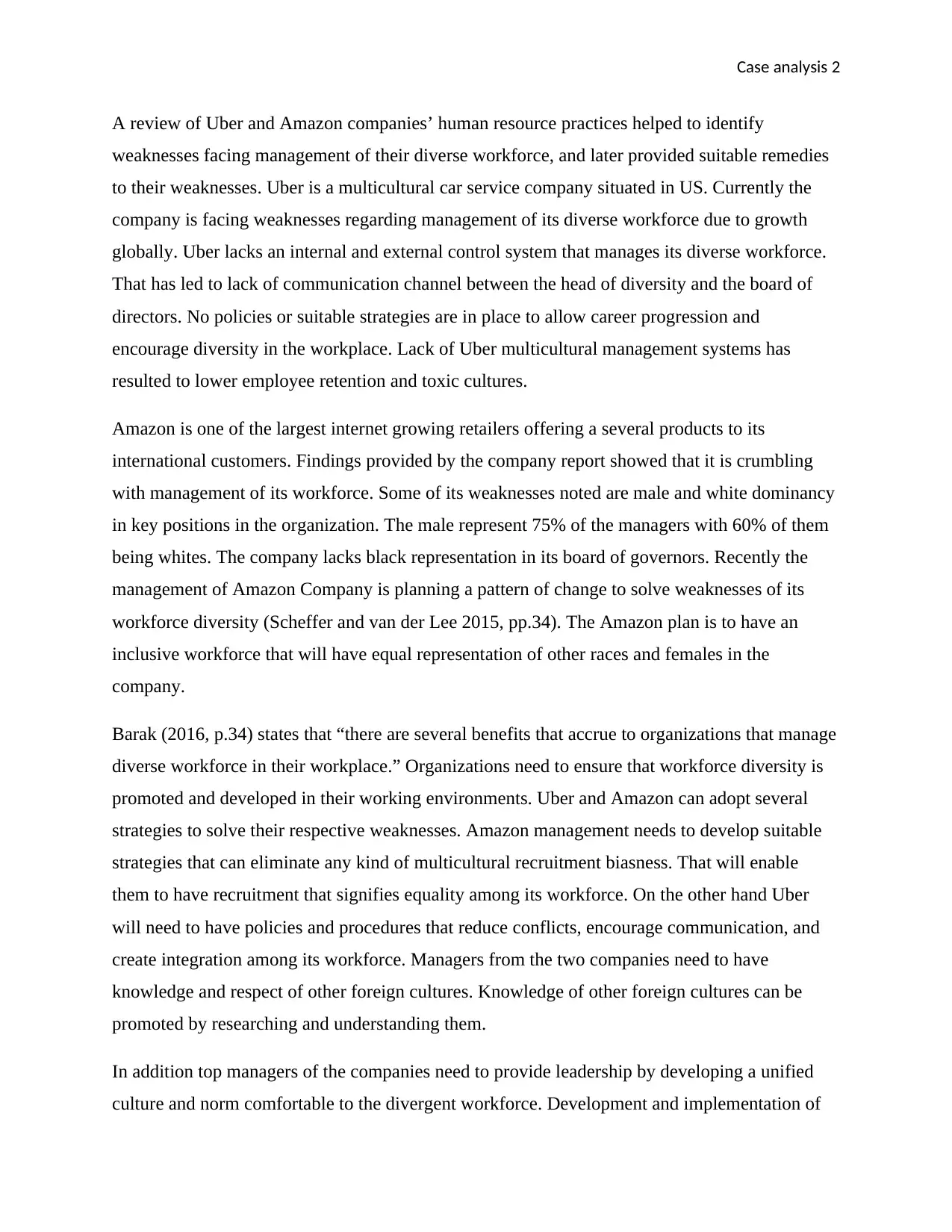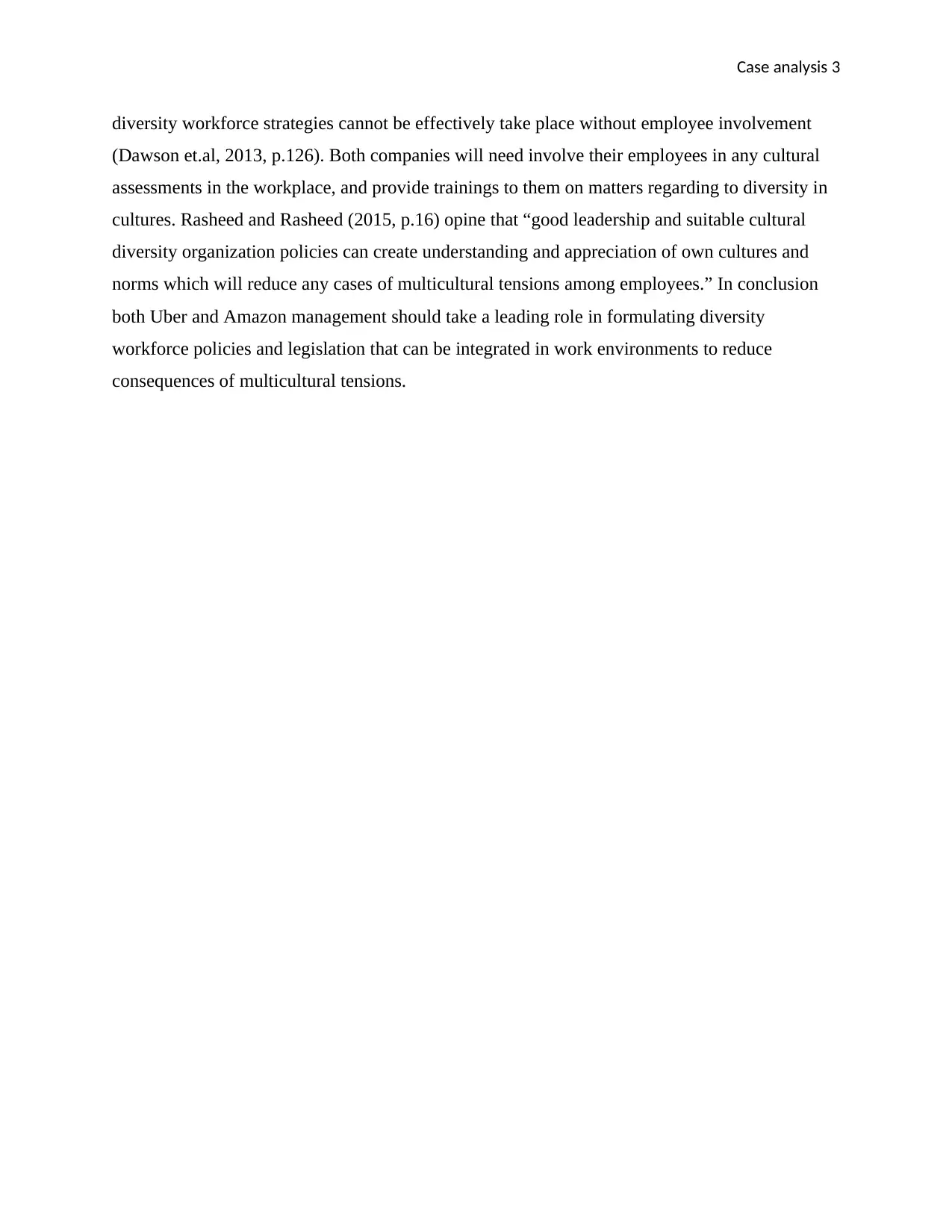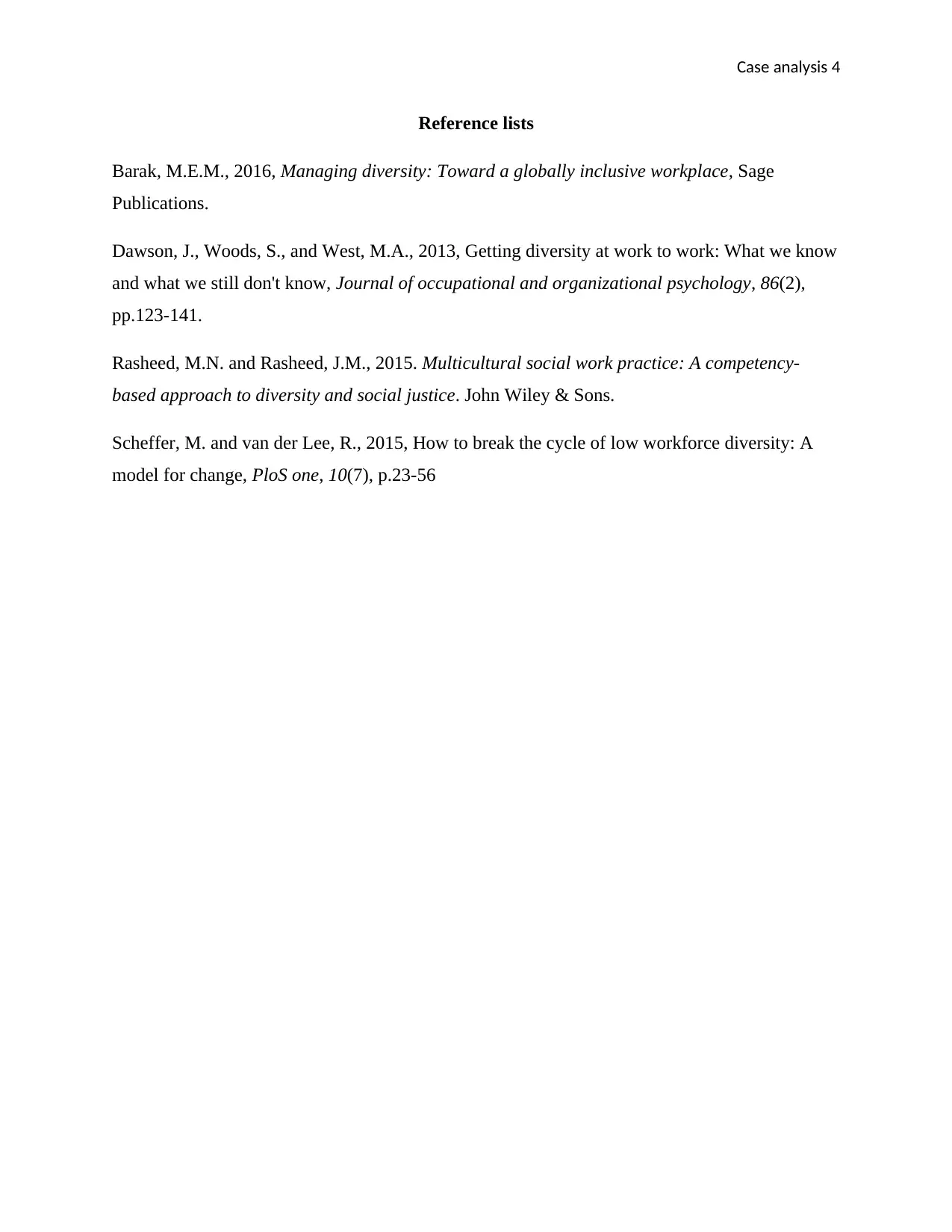Analysis of Uber and Amazon Companies' Workforce Diversity Challenges
VerifiedAdded on 2020/03/16
|4
|706
|34
Case Study
AI Summary
This case study analyzes the workforce diversity challenges faced by Uber and Amazon. It identifies weaknesses in their human resource practices, such as lack of internal control, communication gaps, and male/white dominance in key positions. Uber struggles with managing its multicultural workforce due to global growth, resulting in lower employee retention and toxic cultures. Amazon faces similar issues, with underrepresentation of minorities in leadership. The study proposes remedies like eliminating recruitment biases, implementing policies to reduce conflicts, promoting cultural knowledge through research and training, and involving employees in cultural assessments. The conclusion emphasizes the importance of leadership in formulating diversity policies and legislation to reduce multicultural tensions, fostering a more inclusive and equitable work environment. The case study provides a comprehensive overview of the diversity issues and offers actionable recommendations for improvement.
1 out of 4











![[object Object]](/_next/static/media/star-bottom.7253800d.svg)